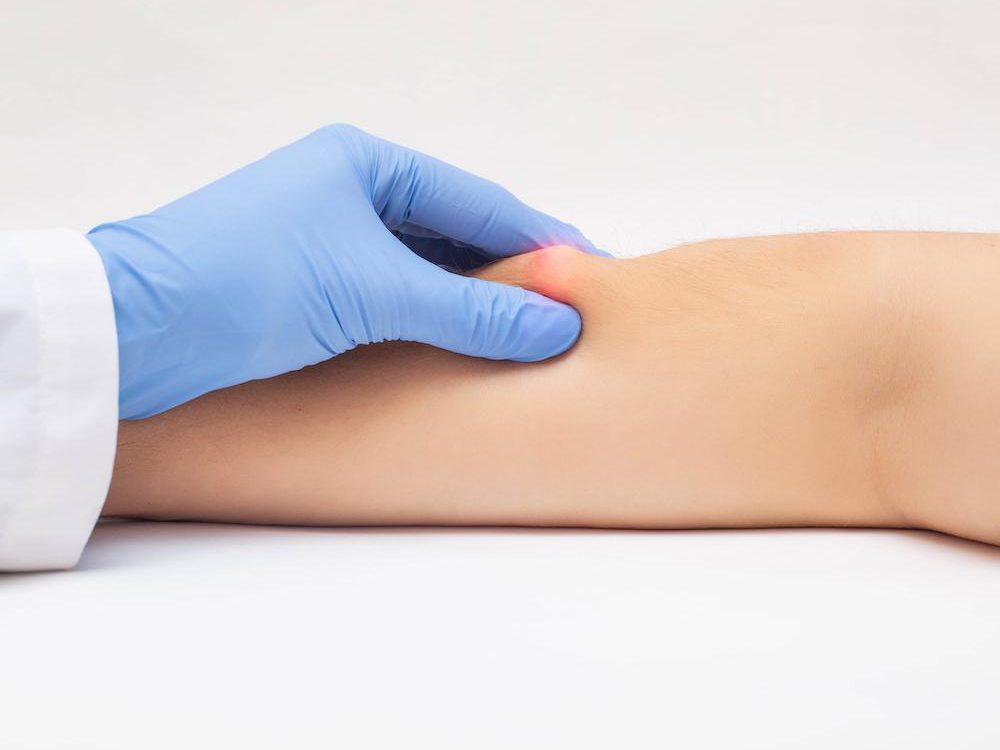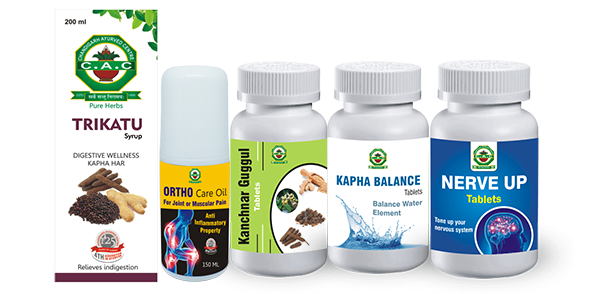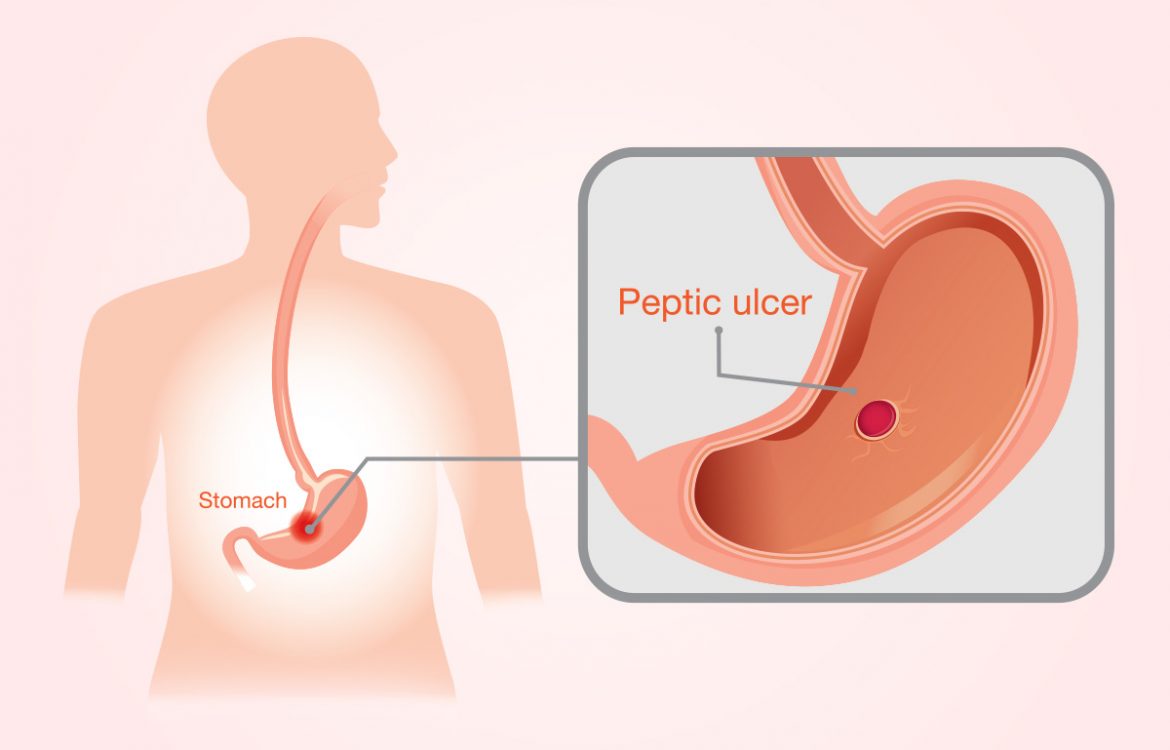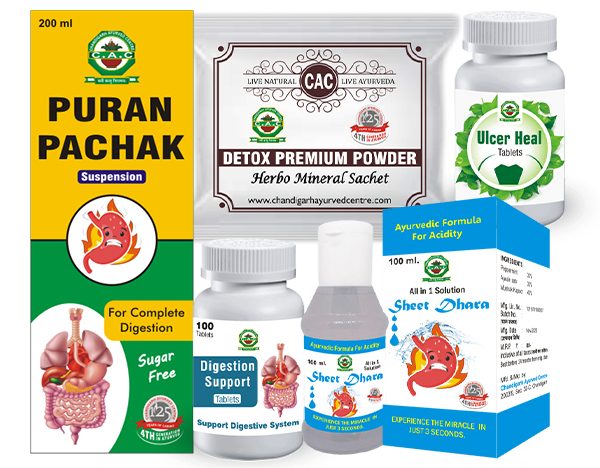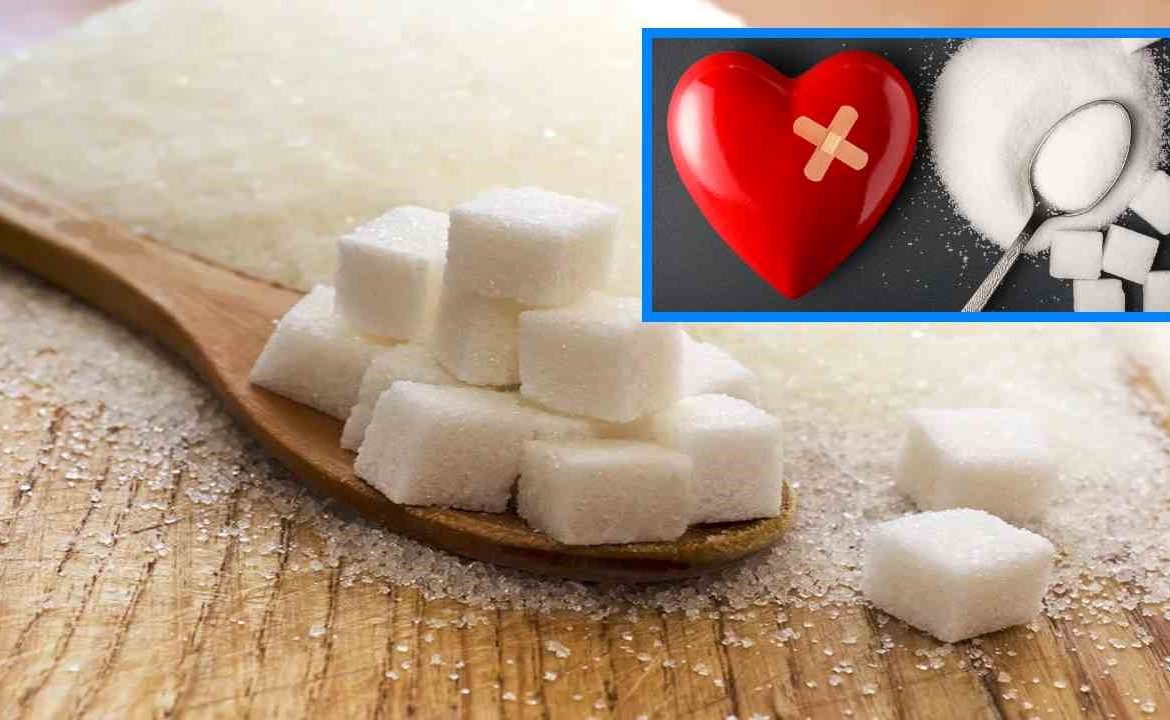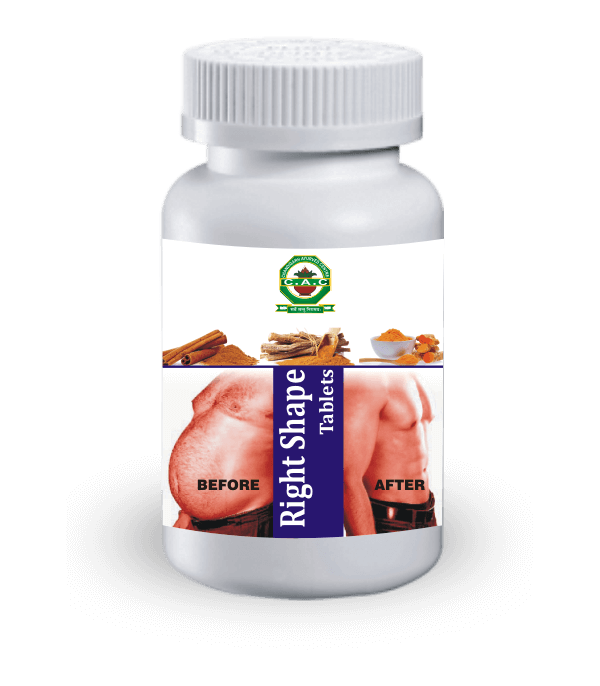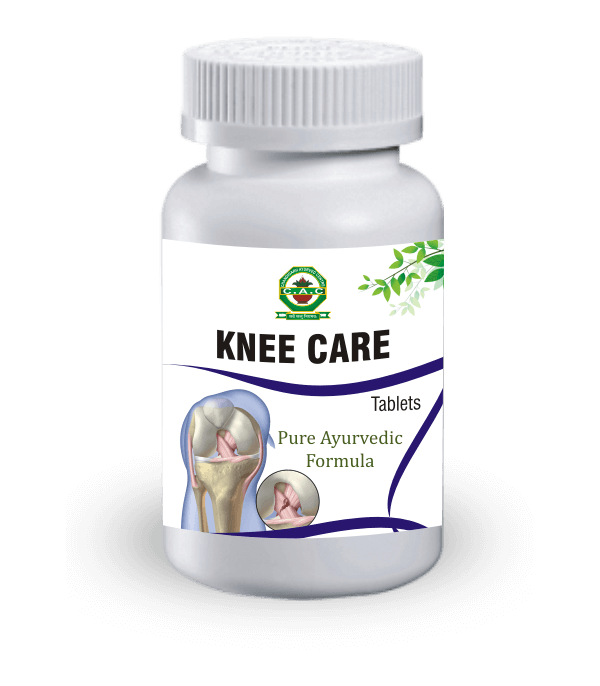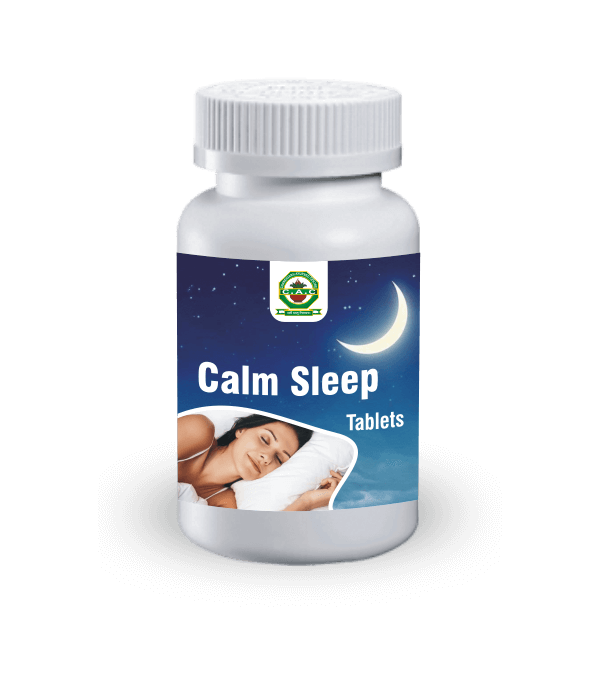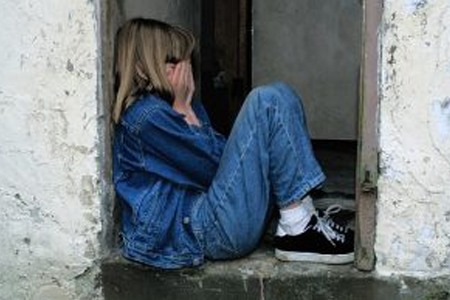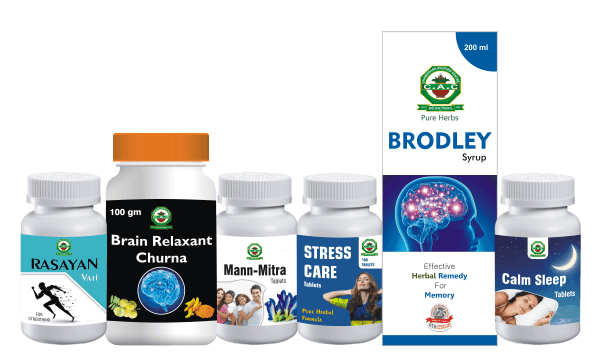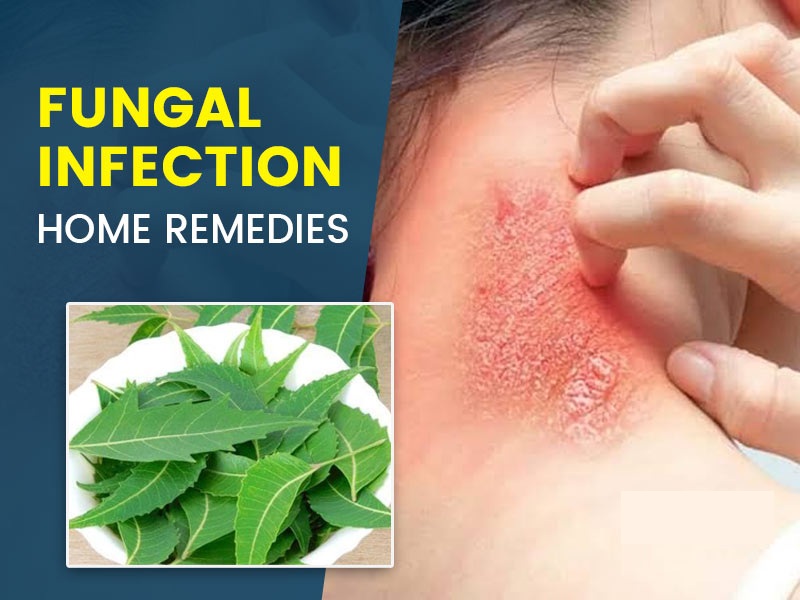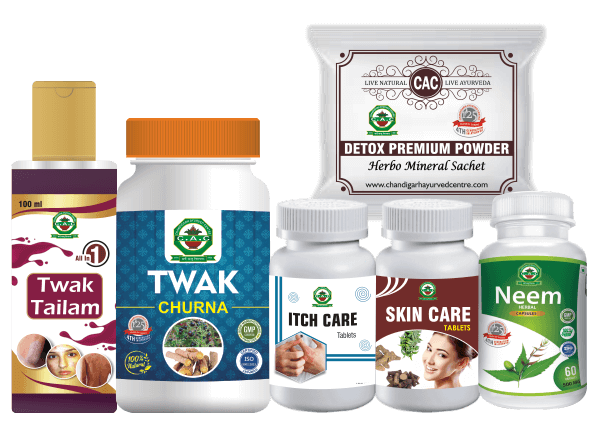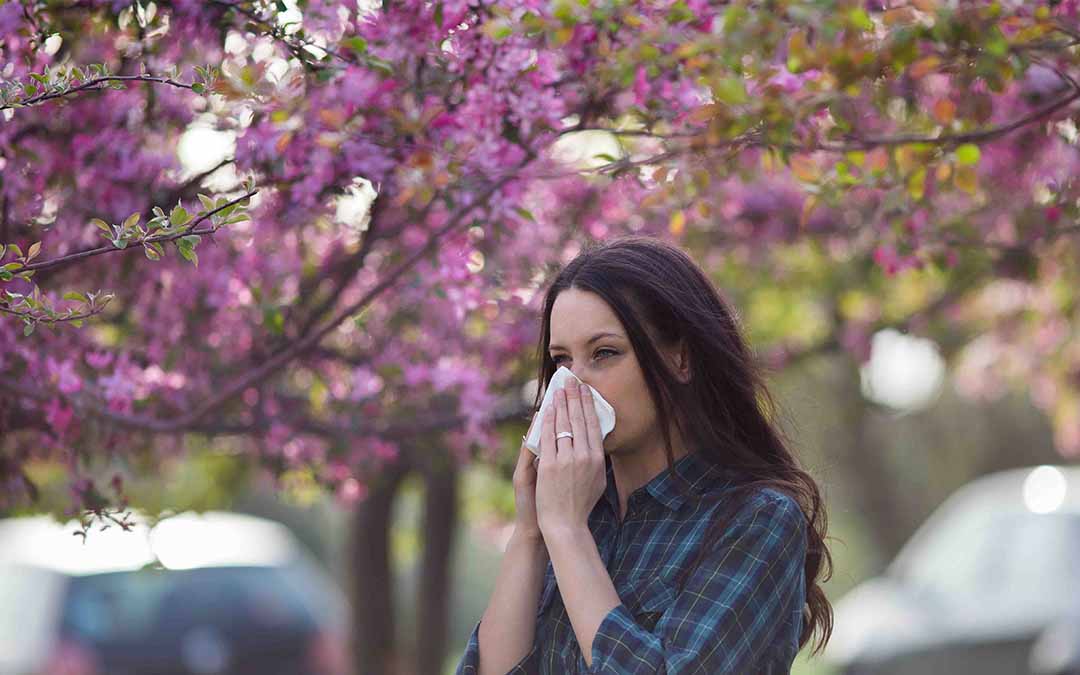Author Archives: Dr. Vaidya Karanvir Singh
LIPOMA AND ITS AYURVEDIC MANAGEMENT
- February 16, 2023
- Posted by Dr. Vaidya Karanvir Singh
- 0 Comment(s)
Lump of fatty tissue which grows under skin is known as Lipoma. It is not hard and feel rubbery when touched and tends to move with slight pressure of fingers. It is usually painless and can appear anywhere on body but most commonly appears on trunk, back, shoulders, neck and arms. They tends to grow slowly and are non-cancerous. Most of the lipomas do not require any treatment but if individual feel bothered it can be removed.
WHAT ARE THE CAUSES OF LIPOMA?
Proper cause of lipoma is not determined but some conditions can contribute in formation of lipoma in the body. The conditions includes:
- Gardner Syndrome : It is a form of Familial adenomatous polyposis (FAP) which causes lipomas along with range of health problems.
- Dercum’s Disease : It is rare disorder that causes growth of painful lipomas mostly on legs, arms and trunk. It is also known as Adiposis dolorosa or Anders’ syndrome.
- Madelung’s Disease : This condition is found mostly in men with drinking problem. It is also known as Multiple symmetric lipomatosis which causes growth of lipomas around the shoulders and neck.
- Hereditary Multiple Lipomatosis : It is also known as Familial multiple lipomatosis and is an inherited condition.
WHAT ARE THE SYMPTOMS OF LIPOMA ?
They are generally painless but can be uncomfortable if press against nerve or develop near joint. The lipoma are usually :
- Mostly Painless but can cause pain and discomfort depending upon their size , location and if there is presence of blood vessels.
- Encapsulated : It do not spread to surrounding tissues
- Round or Oval shaped : They are lumps of fatty tissues which are generally symmetrical in nature.
- Moveable : Lipomas are situated just beneath skin surface and tends to move when touched with fingers.
- Smaller than 2inches in diameters.
AREAS WHERE LIPOMAS GROW :
They can develop in any place in body and they rarely grow on muscles, brain or internal organs. Mostly they develop under skin on the :
- Neck
- Shoulder
- Arms or legs
- Trunk
- Shoulders
- Forehead
WHAT ARE THE TYPES OF LIPOMA ?
There are different type of lipomas which includes :
- Conventional : It contains white fat cells and is most common type of lipoma
- Angiolipoma : This type of lipoma that contains blood vessels and fat and are often painful.
- Fibrolipoma : It is made up of fibrous and fat tissues.
- Myelolipoma : These types of lipomas contains fat and tissues that produces blood cells.
- Pleomorphic : These type of lipomas contain fat cells of different shapes and size.
- Hibernoma : This type of lipoma have brown fat. Brown fat cells tends to generate heat and helps to regulate temperature.
- Spindle cell : The shape of fat cells in this type of lipoma is longer than normal fat cells.
AYURVEDIC APPROACH :
In Ayurved it can be correlated with Medoja granthi. Due to exposure to etiological factors the vata gets vitiated. The Vitiated vata further vitiates the kapha ,meda dhatu , rakta dhatu and mansa dhatu thus giving rise to elevated, round growth in the body. The Granthi consist of excessive amount of Meda.
HERBS :
- Haridra
- Chitraka
- Ativisha
- Kushtha
- Arka
- Shankhini
PANCHAKARMA :
- Vaman
- Virechan
- Udvartan
- Lepam
- Parishek
CHANDIGARH AYURVED CENTRE MEDICATIONS FOR LIPOMA
1. Kapha Balance Tablet:
Kapha tablet is a healthy blend of herbs formulated to balance Kapha doshas without aggravating Pitta and Vata doshas. It can also be used to alleviate any temporary Kapha imbalance. It is very effective in Kapha season that is late winter and spring. It consists of warming and astringent herbs that help to balance the system throughout the cold season. The main use of Kapha tablets is to remove excess Kapha doshas from the system and helps in the management of weight, healthy lungs, and the immune system.
Recommended Dosage:Take 1 tablet twice daily with normal water.
2. Trikatu Syrup:
Trikatu combines the goodness of Black pepper, Ginger and, Long pepper to create an herbal remedy for digestive ailments, sluggish metabolism, obesity, and high cholesterol. This syrup has best results in anti-inflammatory, pain-relieving, and expectorant. It also help to tackle the weight problems or obesity. It can modulate your body’s immune response while cutting the characteristic inflammation associated with the back pain.
Recommended Dosage–Take 2 teaspoonful twice a day before meal with normal water.
3. Kanchnaar Guggulu:
Kanchnaar guggulu is considered as the best medicine for skin problems such as wounds, pimples, boils, etc. The tablet is composed of Kanchnaar (Bauhinia variegata), Pippali (Piper longum), Shunthi (Zingiber officinale), Guggulu (Commiphora mukul), Twak (Cinnamomum zeylanicum), etc. These tablets pacifies all the three doshas and helps in reducing the symptoms of pimples. This medicine checks and treats any kind of abnormal growth in the body, healing of ulcers, thyroid disorders, hernia, lesions and cancer. All kind of unwanted growth and fluid retentions in the body is treated by Kanchnar Guggul and it reduces all kinds of lumps in the body.
Recommended Dosage:Take 1 tablet twice daily with normal water.
4. Nerve up tablet
These tablets are pure ayurvedic formulation. Nerve up tablets help in balancing the vata doshas and kapha dosha. It acts as nervine stimulant. It shows effective results in improving the central nervous system. It contains natural ingredients like shudha kuchala, shudha shilajeet, praval pishti, shankh bhasma etc. This tablet helps in Backache, knee pain, headache, bronchitis, depression.
Recommended Dosage– Take 1 tablet twice daily.
5. Orthocare Oil
CAC ortho care oil is ayurvedic and purely herbal formulation. It helps to relax your muscles, joint pain and muscles cramps thus helpful in relieving pain. It balances all the three doshas of your body thus maintaining proper blood circulation. It provides soothing effect to the affected area of pain. It contains various combinations like Mahanarayan Tail, Mahavishgarbh tail, Laxadi tail etc. All these are natural pain relievers and having anti-inflammatory properties.
Method of Applying: Rub this roller onto your skin where you feel pain, then massage for few minutes.
WHAT IS PEPTIC ULCER? HOW TO CURE IT NATURALLY?
- February 16, 2023
- Posted by Dr. Vaidya Karanvir Singh
- 0 Comment(s)
OVERVIEW
Peptic ulcers are the open sores or ulcers which are present in the inner lining of the stomach and first part of small intestine. They mostly occur due to bacterial infection of the digestive system. The infection is caused by the bacterium Helicobacter pylori or long term use of non-steroidal anti-inflammatory drugs like naproxen, ibuprofen, etc. Peptic ulcers are of two types – gastric and duodenal ulcers. Gastric ulcers are present in stomach and duodenal ulcers are present in the first part of small intestine. Pain in stomach is one of the most common symptoms of peptic ulcers. Intake of spicy foods and excessive stress don’t cause peptic ulcers but makes the condition worse. Peptic ulcers can be managed by certain medications. However, good eating habits and healthy lifestyle play a very important role in its management.
WHAT ARE THE CAUSES OF PEPTIC ULCERS?
Normally, in digestive system, the stomach wall produces acid called hydrochloric acid. This acid helps in digestion of food and protects the body against foreign micro-organisms. For protection against this acid, the stomach wall produces mucus. This mucus covers the stomach lining and prevents it from acid erosion. When the production of this mucus is decreased and secretion of acid is increased, the digestive tract gets damaged leading to formation of ulcer.
Some of the other causes which are responsible for the occurrence of peptic ulcers are:
- Helicobacter pylori bacteria
- Regular intake of painkillers such as NSAIDS, steroids, aspirin, etc
- Cigarette smoking
- Excessive alcohol intake
- Stomach cancer
- Stress
- Anxiety
- Radiation therapy
WHAT ARE THE SIGNS AND SYMPTOMS OF PEPTIC ULCERS?
The common signs and symptoms of peptic ulcers are:
- Burning sensation in abdomen
- Feeling of fullness
- Abdominal bloating
- Acidity
- Nausea or vomiting
- Presence of blood in vomiting
- Severe pain in abdomen between meals or at night
- Dizziness
- Rapid weight loss
- Dark colored stools
- Difficulty in breathing
WHAT ARE THE COMPLICATIONS WHICH ARISE WITH PEPTIC ULCERS?
If peptic ulcers are not treated at time, then it can lead to several complications. Following are the complications of peptic ulcers:
- Internal bleeding
- Anemia
- Perforation in stomach wall
- Inflammation of stomach wall called peritonitis
- Lightheadedness
- Fainting
- Excessive sweating
- Development of scar tissue in abdomen
- Mental confusion
- Shock
- Hard abdomen
AYURVEDIC VIEWPOINT OF PEPTIC ULCER
In Ayurveda, peptic ulcer is known as parinamshool. It includes both gastric and duodenal ulcers. It occurs because of the aggravation of the pitta and kapha dosha. These doshas further aggravate vata dosha causing severe pain. However, according to Ayurveda, it occurs because of the bad eating habits and unhealthy lifestyle. With the intake of some of the herbs, peptic ulcer can be managed.
Following are the herbs which are beneficial for peptic ulcer:
- Mulethi
- Honey
- Garlic
- Coconut
- Methi
CHANDIGARH AYURVED CENTRE’S MEDICATIONS FOR THE TREATMENT OF PEPTIC ULCER
Here are some of the medications of Chandigarh Ayurved centre which are used for the treatment of peptic ulcer:
1. Detox Premium Powder
These are herbal-mineral sachet especially designed for the ulcerative colitis patients. The various ingredients used for the formation of these sachets are prawal pishti, shukta pishti, Giloy satv, kehrva pishti, Jahar Mohra pishti, sutshekhar ras, shankh bhasma, kamdudha ras, moti bhasma that in combination provide good relief on the signs and symptoms of ulcerative colitis patients.
Shukta pishti:The bhasma is prepared from pearl oyster shell calcium. This pishti shows antioxidant & anti-inflammatory properties that give deal with the ulcerative colitis patients.
Prawal pishti:It is made from coral calcium that reduces bleeding associated with ulcerative colitis patients.
Giloy satva: This herbal satv remove all toxins from the body. It reduces excessive Pitta from the body associated with ulcerative colitis.
Jahar Mohra pishti:The antidiarrheal property of this pishti stops loose stools that are the main symptoms in ulcerative colitis patient.
Kehrva pishti:This pishti provides good results in rectal bleeding, diarrhea, rectal bleeding, and abdominal inflammation related to ulcerative colitis patients.
Sutshekhar ras:This preparation reduces bloating & gastritis. It provides calming effect on the body.
Akik pishti:It is a mineral-based medicine that reduces excessive heat, weakness, & general debility.
Kamdudha ras:This ras is beneficial in burning sensation, loose stools, bleeding tendencies related to ulcerative colitis patients.
Moti bhasma: The anti-inflammatory property of this herb reduces inflammation in the body.
Recommended Dosage: Take 1 sachet twice daily with normal water.
2. Ulcer Heal Tablet
Ulcers are caused when the colon becomes inflamed and there is a formation of ulcers on the inner lining of the colon. the largest intestine is affected rather than the small intestine. these are painful, swollen, and leads to fullness and a perpetual feeling of going to pass stools. Ulcers heal tablets of CAC protect the endothelial layer, cure ulcers, and restores body metabolism.
Recommended Dosage: Take 1 tablet twice daily with normal water 30 mins after a meal.
3. Digestion Support Tablet
This tablet is unique blend of best digestive herbs like kutaz chal, bilav, dhania, mustak, shankh bhasm, piper mint, and dadim that maintain natural Ph balance in the stomach and aid digestion of all types of food. The herbs present in this control acidity, gas, flatulence and constipation.
Recommended Dosage:Take 1 tablet twice daily.
4. Puran Pachak Syrup
Puran Pachak is a herbo-mineral Syrup of 200 ml and is Purely Ayurvedic formulation. CAC Puran Pachak syrup helps in Digestion, Supports the Digestive system, and Maintains the doshas in our body. It also helps to remove out impurities or ama from the body. This syrup reduce the Acidity, Detoxify the blood and also Supports the body health. It shows Antacid, Digestive, Anti-inflammatory, Analgesic, Expectorant, and Antioxidant properties. This syrup is made up of pure ayurvedic herbs such as Mulethi, Saunf, Vasakha, Ajwayan, Prpati etc. that helps to maintain the Digestive system and in the body.
Recommended Dosage:Take 2 teaspoonful twice daily.
5. Sheet Dhara
This herbal syrup is prepared from ingredients such as ajwain satav, mushak kapoor, peppermint, etc that naturally relieve the symptoms like bloating, blenching, nausea, vomiting, feeling of discomfort, etc. The regular use of this herbal syrup neutralizes the high acid content, reduces abdominal pain, cramps.
Recommended dosage: Take half teaspoonful of this syrup in half a cup of water. Drink this mixture twice daily on an empty stomach.
HOW HIGH SUGAR INTAKE LINKED TO ELEVATED RISK OF HEART DISEASE?
- February 16, 2023
- Posted by Dr. Vaidya Karanvir Singh
- 0 Comment(s)
High sugar diet can lead to the high blood sugar. Sugar can promote inflammation of body which leads to excessive stress on heart and blood vessels. High blood sugar can damage the blood vessels and the nerves that control your heart. People with diabetes are more likely to have the risk for heart disease. High blood pressure increases the force of blood through arteries and damage artery walls. Increased level of LDL cholesterol in bloodstream can form plaque on damaged artery walls.
SUGAR:
It is a sucrose disaccharide made up of two sugars (glucose and Fructose) bound together. It is a type of carbohydrate that provides energy from food and beverages we consume. White sugar is refined form of sucrose. The empirical formula is C12H22O11. The body uses sugar and starches from carbohydrates to supply glucose to the brain and provide energy to cells around the body.
ALTERNATIVES OF SUGAR INTAKE:
- Stevia
- Monk fruit
- Jaggery
- Honey
- Coconut sugar
HEART DISEASE:–
Heart disease is very common and serious in today’s time. It refers to the several types of heart conditions. Heart disease that includes diseased blood vessels, blood clots, structural problems. The most common types of heart disease is coronary artery disease, cardiac arrest, stroke, congestive heart failure, arrhythmia, peripheral artery disease.
1.STROKE:
It occurs when the blood supply to the brain is interrupted or reduced than the brain tissue is not getting enough oxygen or nutrients.
2.CORONARY ARTERY DISEASE:
It is caused by plaque buildup in the wall of arteries that supply blood to the heart.
3.CARDIAC ARREST:
It occurs when the heart suddenly stops pumping.
4.CONGESTIVE HEART FAILURE:
It occurs when the heart muscle doesn’t able to pump blood throughout the body efficiently.
5.ARRHYTHMIA:
A condition in which the heart beats with an irregular or abnormal rhythm.
6.PERIPHERAL ARTERY DISEASE:
Peripheral artery disease in the legs or lower extremities is the narrowing or blockage of vessels that carry blood from the heart to legs.
CAUSES OF HEART DISEASES:
- High blood pressure
- High cholesterol
- Diabetes
- Unhealthy diet
- More intake of sugar
- Excessive thinking, stress,over anxiety.
- Excessive consumption of salt, sweet,hot foods, Foods which are heavy to digest.
- Physical inactivity
SYMPTOMS OF HEART DISEASES:
- Chest pain
- Shortness of breathe.
- Tastelessness
- Anorexia
- Fainting
- Swelling in the legs, ankles, feet
- Fatigue
- Fever
- Excessive regurgitation of phlegm into mouth.
RISK FACTORS:
- Smoking
- Obesity
- Lack of physical exercise.
- Eat a diet rich in trans fat
- Drinking more amount of alcohol
- High blood pressure
- Chronic kidney disease.
PREVENTION:
- Don’t smoke or use of tobacco.
- Eat a balanced diet.
- Maintain a healthy weight.
- Take sound sleep.
- Manage stress.
- Maintain a blood sugar level.
GOOD FOOD IN HEART DISEASE:
- Almond
- Walnut
- Olive
- Orange
- Sweet potato
- Barley
- Flax seeds
- Cherries
- Dark leafy green vegetables
- Garlic
- Green tea
- Pomegranate
- Soy
FOODS TO BE AVOIDED IN HEART DISEASE:
- Eating too much Sugar, salt, or oily food
- Red meat
- Pizza
- Pasta
- Alcohol
CHANDIGARH AYURVED CENTRE MEDICATION FOR THE TREATMENT OF HEART DISEASE:-
1. Trikatu Syrup
Trikatu Syrup helps to eliminate excess Kapha or mucous from the body, supports respiratory system, manages weight, helps to take out impurities or ama from the body, supports healthy detoxification, reduces swelling. It shows anti-inflammatory, analgesic, expectorant, antioxidant properties. This syrup is made up of equal parts of three herbs such as Pippali (Piper longum), Shunthi (Zingiber officinale), & Marich (Piper nigrum) that maintains the metabolism in the body. The regular use of this syrup balances the thyroxine hormone and treats hyperthyroidism naturally. It is an Appetizer and it improves digestion, supports normal gastric function, and normal circulation.
Recommended Dosage – Take 2 teaspoonful twice daily before meals.
2. Kapha Balance Tablet
Kapha tablet is a healthy blend of herbs formulated to balance Kapha doshas without aggravating Pitta and Vata doshas. It can also be used to alleviate any temporary Kapha imbalance. It is very effective in Kapha season that is late winter and spring. It consists of warming and astringent herbs that help to balance the system throughout the cold season. The main use of Kapha tablets is to remove excess Kapha doshas from the system and helps in the management of weight, healthy lungs, and the immune system.
Recommended Dosage – Take 1 tablet twice daily with normal water.
3. Heart Up Tablet
Heart Up Tablet is a unique formulation and is very effective in the treatment of heart diseases and related symptoms. It acts as a cardioprotective and anti-arrhythmic medicine providing strength to the heart muscles and maintains heart rate. This medicine is very useful in relieving pain and maintains blood optimum viscosity.
Recommended Dosage – Take 1 tablet twice daily with normal water.
4. Nerve up tablet
Nerve up tablets help in balancing the vata doshas & kapha dosha, and acts as nervine stimulant. It shows effective results in improving the central nervous system. It contains natural ingredients like shudha kuchala, shudha shilajeet, praval pishti, shankh bhasma etc. This tablet helps in memory boosting, reduces stress, act as immune-modulator. It also shows effective results in disorders of heart and circulatory system.
Recommended Dosage– Take 1 tablet twice daily.
5. Active Plus Tablet
Active plus Tablet is a pure herbo-mineral formulation prepared from best quality of herbs. This tablet is best for person mental and physical health, also helps to boost up the immunity. The herbal ingredients present in these tablets are used to maintain person’s health and refreshes the mind and body. These tablets improves digestion, eliminates constipation, stress, nourishes brain, acts as antioxidant, analgesic, anti-inflammatory, etc.
Recommended Dosage– Take 1 tablet twice daily.
6.Noni Capsule:
Noni capsule contain standardized extract of herb Noni (Morinda citrifolia) that is good for overall health of heart. These capsule deals with the blocked arteries of the heart. The formation of plaque is overcome with the use of these herbal capsules.
Recommended dosage: Take 1 capsule twice daily with normal water.
CAC RIGHT SHAPE TABLET
- February 16, 2023
- Posted by Dr. Vaidya Karanvir Singh
- 0 Comment(s)
The right shape tablet of CAC is an Ayurvedic herbal supplement for natural weight loss. The herbs help us to burn fats from the adipose tissue and also help in cellulite. Irregular diet habits, excessive food intake without any exercise leads to indigestion and further obesity. The “Pitta the digestive fire” disturbance leads to indigestion and causes the assimilation of fats. This tablet also balances Kapha and pitta doshas and increase overall metabolism and burn fats.
INGREDIENTS:
1. Garcinia indica:
Garcinol is the main component and it is also known as kokum. It has antioxidant, anti-obesity, anti-bacterial, hepato protective, cardio protective, antidepressant properties.
2. Camellia sinesis:
It is a shrub or evergreen tree. It contains bioactive compounds such as phenolic acids,flavonoids,tannins. It has anti-cancer, anti-oxidant, anti-microbial properties.
3. Green coffee extract (Coffee arabica):
The main ingredients in green coffee beans are chlorogenic .It has anticancer, antibacterial and anti-oxidative properties and support healthy lipid levels.
4. Guggulu ext(Commiphora mukul ):
It contains a mixture of plant compounds including steroids, essential oils, lignans, and flavonoids. It has anti-inflammatory, anti-arthritic, antispasmodic, antioxidant, antimicrobial properties.
5. Dalchini ext (Cinnamomum verum):
This spice has pungent, bitter or sweet taste, Dry or sharp quality, hot potency .It is very useful in treating diabetes, high cholesterol and improves digestion strength. It is useful in painful hemorrhoids and piles. It has diuretic, antioxidant, anti-inflammatory properties.
6. Ashwagandha ext (WITHANIA SOMNIFERA):
Ashwagandha contain chemicals that help in reducing stress and swelling, lower blood pressure. It improves the body defense against disease. Chemical composition of ashwagandha is anaferine, cuseohygrine, Withaferins, saponins.It enhances the function of brain and nervous system and improves the memory.
7. Haritaki (Terminalia Chebula):
The haritaki contains tannins such as chebulinic acid. It also contains 18 amino acids and little amount of phosphorus, succinic, quinic acid. It helps in digestion and therapeutic properties like cardio protective, diuretic, laxative, and expectorant, astringent.
8. Bibhitiki (Terminalia bellirica):
It contains many antioxidants such as tannins, lignans and flavones. It has anti-microbial and anti-inflammatory properties that help to treat hair infection, itching. It also gives essential nutrients to the hair follicles, improves blood flow and strengthens the hair from the root to tips.
9. Amla (Emblica officinalis):
It is a rich source of vitamin C (ascorbic acid). It contains different polyphenols such as Gallic acid, luteolin. It has anti-bacterial or anti-inflammatory properties. It helps to improve immunity, aids in weight management, prevent viral infection. It is a natural blood purifier relieves pain.
USES:
- Helps to burn excessive fat.
- Increase body metabolism.
- Controls excessive eating and cravings.
- Reduce cholesterol level.
- Remove toxins from the body.
- Improves gut health.
- Balances kapha or pitta dosha.
ALLOPATHIC COUNTERPART OF RIGHT SHAPE TABLET ALONG WITH ITS SIDE EFFECTS:
Naltrexone HCl and bupropion HCl:
BRAND NAME : Contrave
Contrave is a brand name which consist of two medicines named as Naltrexone hCl and Bupropion HCl. Naltrexone is an opioid antagonist and Bupropion is an aminoketone anti-depressant. It is a combination medicine that helps in reducing weight. It contains 8mg Naltrexone and 90mg Bupropion.The empirical formula of naltrexone is C20H23NO4•HCl and bupropion is C13H18ClNO•HCl. This medicine works on areas of the brain involved in the control of food intake and energy use.
USES:
- Reduce hunger
- Control cravings
- Helps in burning fat
SIDE EFFECTS:
- Joint pain
- Itching or rashes
- Muscle pain
- Difficulty in sleeping
- Headache
- Nausea
- Abdominal cramp
- Increase in blood pressure
- Hepatitis
- Manic episodes
- Dry mouth
CONTRAINDICATION:
- Seizure disorder
- Liver disorder
- Central nervous system tumor
- Stroke
- Anorexia nervosa
- Bulimia nervosa
CAC KNEE CARE TABLET
- February 16, 2023
- Posted by Dr. Vaidya Karanvir Singh
- 0 Comment(s)
These tablets are purely Ayurvedic formulations which are 100% safe to use. Pain in knee is getting very common in today’s time due to wrong eating habits and lack of exercise. According to Ayurved knee pain is due to accumulation of “Ama” (toxins) in body which obstructs the channels in knee region leading to development of pain and stiffness there.
These tablets are very affective in osteoarthritis, gout, rheumatoid arthritis etc. The herbs used in preparation of these tablets have antioxidant, anti-inflammatory and analgesic properties thus provide excellent results in swelling, stiffness, body pain and inflammation. These tablets also helps to remove toxins out from the body due to antioxidant nature.
INGREDIENTS OF CAC KNEE CARE TABLET :
- SHALLAKI (Boswellia serrata) : It helps to reduce the ama accumulated in the joints thus helps to bring down the swelling and inflammation in the joints thus providing relief from rheumatoid arthritis and other joint related disorders.
- SONTH (Zingiber officinale) : It has potent anti-inflammatory properties thus helps to reduce pain and stiffness in the joints. It also helps to improve the circulation of blood in various body parts thus reduce inflammation and swelling in the joints.
- KALI MIRCH (Piper nigrum) : It has antioxidant, analgesic and anti-inflammatory properties thus helps to improve the pain, inflammation and stiffness in joints. It also helps to remove the accumulation of ama from the affected joints.
- PIPPALI (Piper longum) : It has anti-arthritic and anti-inflammatory effect on the body thus helps to alleviate the symptoms likes pain, swelling , stiffness etc in the joints. It also exhibits Vata pacifying properties.
- CHINGATI SATVA : It is a natural source of Glucosamine that is helpful for building up fluid in joints which supports construction and maintenance of cartilage. IT not only provide relief from the pain but also improve overall joint health.
- SHUDDH GUGGULU (Commiphora mukul ) : It has potent anti-arthritic and anti-inflammatory properties and inhibits the chemical that leads to inflammation and pain thus providing relief from pain, stiffness and swellings in joints.
- HINGULESHWAR RASA : It is one of the effective Ayurvedic formulation which have purgative, anti-phlogistic, anti-inflammatory, purgative, anti-arthritis properties thus is useful to manage many vata disorders and alleviate symptoms like inflammation, stiffness, pain etc.
USES OF CAC KNEE CARE TABLET :
- Rheumatoid arthritis
- Gout
- Osteoarthritis
- Body pain
- Bursitis
- Swelling
- Stiffness
- Tendinitis
- Inflammation
- Meniscus knee(rupture of cartilage in the knee)
- Baker’s cyst
- Chondromalacia patella (ruptured cartilage under kneecap)
COMPARED TO CAC KNEE CARE TABLETS ITS ALLOPATHIC COUNTERPART IS INDOMETHACIN
Indomethacin is Non-Steroidal Anti-Inflammatory drug commonly used to relieve stiffness, swelling and pain from inflammation. It usually start to work within 1 week but in serious cases it may take two weeks or longer.
MECHANISM OF ACTION :
It is non-selective inhibitor of Cyclo-oxygenase 1 and 2 enzyme which helps in prostaglandin synthesis. Prostaglandins lead to development of inflammation and pain in body. Thus by inhibiting synthesis of prostaglandins it reduces pain, inflammation, stiffness etc in the body.
It is available in market under brand name :
- Artisid
- Donica
- Edcin
- Indo
- Idicin
- Indoflam
- Inmecin
- Microcid
- Recticin
SIDE-EFFECTS :
- Belching
- Nausea
- Vomiting
- Diarrhea
- Indigestion
- Blurred vision
- Abdominal cramps
- Itching, prickling , burning or tingling sensation
- Decreased appetite
- Depression
- Cracks in the skin
- Confusion
- Headache
- Increased urination
- Dry mouth
- Canker sores
- Seizures
- Skin rashes
- Slurred speech
- Tightness in chest
CONTRA-INDICATIONS :
- Stroke
- Blood clot
- High blood pressure
- Parkinson’s disease
- Chronic heart failure
- Pregnancy
- Chronic kidney disease
- Hypersensitivity to NSAIDS
CAC GOKSHURADI GUGGULU
- February 16, 2023
- Posted by Dr. Vaidya Karanvir Singh
- 0 Comment(s)
Gokshuradi guggulu is a pure herbal formulation used in treatment of urinary tract infection and kidney disorders. It acts as diuretic and improves the function of kidney. It is helpful in diseases like kidney stones, osteoarthritis, difficulty in urination, gout etc.
INGREDIENTS:
- Gokshura (Tribulus terrestris) :
It gives relief in benign prostatic hyperplasia or enlarged prostate gland due to its diuretic or cold properties. This helps to increase urine secretion and reduce the swelling and burning sensation during urination. Gokshura have anti-obesity,anti-aging, hypotensive properties.
- Guggul(COMMIPHORA MUKUL):
It contains a mixture of plant compounds including steroids,essential oils, lignans, flavonoids. It has anti-inflammatory ,anti-arthritic, antispasmodic, antioxidant, antimicrobial properties.
- Black pepper (Piper nigrum):
It contains a chemical called piperine . It reduces pain, improve breathing,reduce inflammation. It also improves brain function.
- Ginger (Zingiber officinale):
The ginger spice comes from the root of plant.it is used as a food flavoring and medicine. It contains chemicals that reduce nausea and swelling. Ginger have anti-inflammatory, antibacterial, antiviral properties.
- Haritaki (Terminalia chebula):
the haritaki contains tannins such as chebulinic acid. It also contains 18 amino acids and little amount of phosphorus, succinic, quinic acid. It helps in digestion and therapeutic properties like cardio protective, diuretic, laxative,expectorant, astringent.
- Pippali (piper longum):
It contains many phytochemicals including alkanoids as important secondary metabolites essential oil and steroids. It act as a rejuvenate by increasing depleted dhatu. It is used to treat many diseases such as vomiting, cough, skin allergic condition,. Inflammatory condition. It also act as a carminative, digestant, appetizer, stimulant, diuretic.
- Bibhitaki (Terminalia bellirica):
It contains many antioxidants such as tannins, lignans and flavones. It has anti-microbial and anti-inflammatory properties that help to treat hair infection, itching. It also gives essential nutrients to the hair follicles, improves blood flow and strengthen the hair from the root to tips.
- Mustak or Nagarmotha (Cyprus rotundus):
It has katu ,tikta and kshaya taste laghu and ruksha properties . It revitalizes the metabolic rate and supports the maintenance of healthy bodyweight. It also promotes normal liver function. It improves lactation, relieves fever, burning sensation and excessive thirst.
- Amla or Indian gooseberry (Emblica officinalis):
It is a rich source of vitamin C (ascorbic acid). It contains different polyphenols such as Gallic acid, luteolin. It has anti-bacterial or anti-inflammatory properties. It helps to improve immunity, aids in weight management, prevent viral infection. It is a natural blood purifier relieves pain.
USES:
- Kidney stone.
- Gouty arthritis.
- High blood pressure.
- Helps to support prostate health.
- Support reproductive system.
- Prevent urinary tract infection.
- It is useful in bed –wetting.
ALLOPATHIC COUNTERPART OF GOKSHURADI GUGGULU ALONG WITH ITS SIDE EFFECTS.:
FUROSEMIDE:
It belongs to the class of loop diuretic. It is used in treatment of extremely high blood pressure and edema. It removes extra water and electrolytes from the body by increasing the amount of urine produced. The chemical formula of Furosemide is C12H10ClN2NaO5S. It prevents body from absorbing too much salt. It is used to treat fluid retention in people with congestive heart failure, liver disease, or kidney disorder such as Nephrotic syndrome
BRAND NAMES:
- Lasix
USES:
- Treatment of Hypertension
- Edema caused by congestive heart failure.
SIDE EFFECTS :
- Dizziness
- Headache
- Blurred vision
- Chest pain
- Nausea
- vomiting
- Shortness of breath.
- Muscle spasm
- Skin rash
CONTRAINDICATION:
- Hypokalemia
- Severe hyponatremia
- Hypotension
- Anuria
CAC CALM SLEEP TABLET
- February 16, 2023
- Posted by Dr. Vaidya Karanvir Singh
- 0 Comment(s)
These tablets are purely herbal and Ayurvedic formulation. These tablets helps to relieve the mental as well as physical stress and fatigue. In Ayurved imbalance of tridoshas i.e Vata, Pitta and Kapha leads to development of the disease in the body. And Vata doshas sub type Prana vayu which is located in brain regulates the sensory perception but its vitiation leads to development of insomnia, anxiety, Alzheimer’s disease, depression etc. The herbs used in the tablets are Brahmi, amla, tagar , sarpgandha and amla. These herbs have vata pacifying properties thus helps to relieve the conditions caused by vitiated prana vayu. These tablets helps to pacify the nervous system making the body and mind calm.
INGREDIENTS OF CALM SLEEP TABLETS :
- JATAMANSI (Nardostachys jatamansi ) : It is potent ayurvedic nerve tonic used to enhance the function of nerves along with providing nourishment to the brain cells. It also fight the stress and enhance cognitive performance along with over all well being. It also have calming and soothing effect on the mind and body thus helps to relieve stress and fatigue while providing sound sleep. It tends to lessen symptoms such as irritability, depression associated with sleep disorder.
- BRAHMI (Centella asiatica ) : It is a potent brain tonic that helps to lower the cortisol levels and manage the stress. It also tends to improve the alertness and concentration. It helps to calm hyperactive brain nerves which not only induce sleep but also enhance the sleep quality.
- TAGAR (Valeriana wallichii) : It helps to reduce activity of certain chemical thus helps in calming the hyperactive brain and inducing sound sleep. It also have anti-oxidant and anti-inflammatory properties thus serve as nerve tonic.
- SARGANDHA (Rauwolfia serpentina ):It has bioactive compounds called Alkaloids that has sedative properties thus impart positive influence on agitated mind and central nervous system. As it pacifies the mind and tackles bouts nervousness, anxiety, panic attack etc thus provides peaceful sleep.
- KHURASANI AJWAIN(Hyoscyamus niger) : It induce hynosis thus is helpful remedy for the treatment of insomnia. It also has sedative properties thus helps to calm the agitated mind.
- AMLA (Emblica officinalis) : It has sedative properties thus helps to alleviate stress and provide sound sleep in insomnia. It also have anti-oxidant properties which helps in limiting the damage caused by free radicals and improve overall body healthy.
USES OF CALM SLEEP TABLETS :
- Relax mind
- Keep stress free
- Calm sleep
- Hypertension
- Anxiety
- Depression
- OCD
COMPARED TO CAC PAIN-O-KILL TABLETS ITS ALLOPATHIC COUNTERPART IS FLURAZEPAM
Flurazepam is a derivative of Benzo-diazepine. It has anti-convulsant, sedative, anxiolytic, hypnotic and skeletal muscle relaxant properties. It gets absorbed within 30 minutes of ingestion from the gastro-intestinal tract. Flurazepam stays in the blood stream for days after even after discontinuing it. It should not be continued any longer than 1 to2 weeks for treatment of insomnia.
MECHANISM OF ACTION :
It binds with allosteric site of GABA-A receptors and increase the action of GABA (chemical messenger) that tends to suppress the excessive and abnormal activity of nerve cells thus inducing sleep.
Available in market under brand name of :
- Nindral
- Fluraz
- Zomnia
SIDE-EFFECTS:
- Vomiting
- Dizziness
- Heartburn
- Diarrhea
- Irritability
- Joint pain
- Drowsiness
- Constipation
- Loss of coordination
- Weakness
- Nervousness
- Nausea
- Chest pain
- Rash
- Hoarseness
- Difficulty in breathing
- Hives
- Dry mouth
- Increased sweating
- Unpleasant taste in mouth
CONTRA-INDICATION :
- Porphyria
- Drug abuse
- Depression
- Psychotic disorder
- Decreased lung function
- Liver problems
- Pregnancy
CAN DIET HELPS TO IMPROVE DEPRESSION SYMPTOM ?
- February 16, 2023
- Posted by Dr. Vaidya Karanvir Singh
- 0 Comment(s)
Depression is mood disorder which persist for weeks or months that negatively affects individuals way of thinking, way of feeling and how they response to certain conditions. It tends to interfere with individuals day to day routine. Feeling sad or feeling dishearten due to difficult life situations is normal reaction but if the feeling of sadness persist every day for at least 2 weeks and also have other symptoms than it is cause of serious concern. If depression is not timely manage the symptoms may worsen and can lead to suicide or self-harm.
WHAT ARE THE CAUSES OF DEPRESSION?
The exact causes of depression is not known but multiple factors tends to contribute in the development of this condition. The factors includes :
- Genetics : Having family history of depression can increase the risk three folds for development of depression than other individuals.
- Stressful Life events : Experiencing difficult life situations like divorce, death of loved ones, financial crisis, isolation etc can trigger depression in individual.
- Certain Medications : Some medicines tends to develop depression in individual as their side-effect. Also abuse of alcohol or drugs can increase the risk of depression.
- Brain Chemistry : Imbalance of neuro-transmitters like dopamine and serotonin can contribute in development of depression.
- Health Conditions : Chronic conditions like diabetes, Alzheimer’s disease etc and chronic pain can increase the risk of depression.
WHAT ARE THE SYMPTOMS OF DEPRESSION?
The common symptoms of depression experienced by individual includes :
- Loss of interest in hobbies
- Feeling hopeless or sad
- Getting frustrated or irritated easily
- Trouble in sleeping or excessive sleep
- Eating too little or too much
- Feeling of Fatigue all day
- Difficulty in concentration or making decisions.
- Physical issues like stomachache, headache etc.
- Self-harm
- Suicidal thoughts
DIET THAT HELPS TO IMPROVE DEPRESSION SYMPTOMS :
Improvement in one’s diet by focusing on fresh and wholesome food which has high nutritional value may improve symptoms of depression. Not only addition of health food but one should also eliminate processed sweets, foods and fried food for better improvement.
The diet that helps to improve symptoms of depression includes :
- Protein Rich Food : Amino acid called tryptophan helps body to make energy and also helps in formation of neuro-transmitters melatonin and serotonin. Serotonin is said to have positive effects on individuals mood and melatonin helps to achieve good sleep which in turn improve the mood. Including tryptophan rich foods in diet helps to alleviate the symptoms of depression .The food includes :
- Tuna
- Chicken
- Turkey
- Low fat cheese
- Soy products
- Beans
- Omega 3 Fatty Acids Rich Food : Omega-3 fatty acids is important part of cell membranes and also affect the cell receptors function which are present on membrane. It is present in high concentration in cells of brain. It is said to improve the symptoms of depression .The food rich in Omega 3 fatty acids includes :
- Walnuts
- Flax seeds
- Salmon
- Soybean oil
- Chia seeds
- Canola oil
- Selenium Rich Food : The oxidative stress causes damage in the brain cells leading to development of stress and depression. Selenium work as excellent anti-oxidant in body that helps to reduce damage caused by oxidative stress and also neutralize excess free radicals. But too much of selenium can lead to its toxicity thus show be consumed with caution. The food rich in Selenium includes :
- Brazil nut
- Oysters
- Crab
- Clams
- Brown rich
- Good Carbs : Intake of carbohydrate signals brain to release mood enhancing neuro-transmitter called Serotonin. So one should incorporate healthy carbohydrates and eliminate processed carbs, sugar from their diet. Intake of :
- Legumes
- Vegetables
- Fruits
- Whole Grains
- Vitamin-B Rich Food : Low levels of Vitamin B are linked with experiencing low mood or symptoms of depression. Vitamin-B plays important role in formation of dopamine and serotonin the neuro-transmitters related to regulation of mood. Food rich In Vitamin-B includes :
- Whole Grain
- Poultry
- Chickpeas
- Broccoli
- Kale
- Spinach
- Probiotics : The probiotic improve health gut flora. The gut flora has connection to brain called as Gut-brain axis which plays vital role in the production of neurotransmitters affecting mood, appetite or sleep habits , affects cognitive functions and body’ s response to stress. So improvement in the gut health tends to relieve symptoms of Depression also. The probiotic rich foods products includes :
- Yogurt
- Kimchi
- Miso
- Kombucha
- Idli
FOODS TO AVOID IN DEPRESSION :
- Caffeine
- Heavily processed foods
- Alcohol
- Processed sugar and artificial sweeteners
- Hydrogenated oil
- High-fat dairy products
- High sodium rich food
- Carbonated drinks
CHANDIGARH AYURVED CENTRE MEDICATIONS FOR TREATMENT OF DEPRESSION
1. Brodley Syrup:
This syrup maintains the overall activity of the brain. As the herbs used for the preparation of this syrup are Brahmi (Bacopa monnieri), Shankhpushpi (Convolvulus pluricaulis), Dhania (Coriandrum sativum), Ashwagandha (Withania somnifera), Saunf (Foeniculum vulgare), etc. These all acts as a mind relaxant. The use of this syrup provides good results to the dementia patient. This syrup has the best memory boosting power and helps in increasing the blood flow to the brain. It is used as an antioxidant that increases retention power
Recommended Dosage:Take 2 teaspoonful twice daily.
2. Mann Mitra tablet:
Mann Mitra tablet is herbal and purely ayurvedic medicine. It is used in Ayurvedic treatment for psychiatric conditions and help to balance all the three doshas of body i.e vata, pitta, kapha. CAC Mann Mitra tablet improves intelligence and speech problems. It is helpful for making the nervous system strong and nerves as well. It contains various herbs like Bala, Vacha, Shankhpushpi, Nagkeshar etc that help you fight insomnia, anxiety, and stress. It works as a antioxidant, anti depressant, immuno booster, anti epileptic and as neuro protective drug.
Recommended Dosage:Take 1 tablet twice a day with normal water.
3. Rasayan Vati:
Rasayan vati is herbo-mineral Ayurvedic formulation which contains various herbs such as Aswagandha, Shilajeet, Amla, Musali, Shatavar, Brahmi, Mukta pisti, Praval pisti, , Kaunch Beej, Saunth, Mirch, Brahmi, etc. These ingredients show antioxidant, anti-inflammatory, antipyretic, analgesic, immune-modulator properties. These tablets provides good results in General debility, Psychological disorders, and improves immunity.
Recommended Dosage:Take 1 tablet twice daily.
4. Calm Sleep tablet:
Calm sleep tablet is an amazing combination of natural herbs like bhang, Brahmi, Tagar, jatamansi. It helps to relieve stressful conditions. They help to pacify the nervous system and also helps to calm minds and make your body relax and light. In Ayurveda when there is an imbalance of three energies i.e. vata, pitta and Kapha, it leads to disease. Vata has a sub dosha named prana doshas which regulates the sensory perception, brain, and mind. calm sleep tablets is effective in depression, anxiety, insomnia, amnesia, Alzheimer’s disease, obesity, and hypertension.
Recommended Dosage:Take 1 tablet twice a daily.
5. Brain relaxant churna:
This churna is a pure Ayurvedic preparation which contains Amla (Emlica officinalis), Sonth (Zingiber officinale), Pippali (Piper longum), Marich (Piper nigrum), Haldi (Curcuma longa), Bala (Sida cordifolia), Suddha gandhak, Lauha bhasma, etc. It is mainly used for the treatment of psychiatric conditions, speech problems, to improve the intelligence and also beneficial in sleep disturbances, panic attacks, phobia, and relieves stress.
Recommended Dosage:Take 1 tablespoonful twice daily.
6. Stress care tablet:
Stress care tablets are pure herbal formulation prepared from ingredients like Sarpgandha (Rauwolfia serpentine), Brahmi (Bacopa monnieri), Jatamansi (Nardostacys jatamansi).The herbs used for formulation of these tablets show antioxidant, anti-inflammatory, anti-stress, anti-depressant, & immune-modulator properties. These herbal tablets gives good result in Stress, Depression, Anxiety, All neurological disorders, Increases intelligence, and Improves memory.
Recommended Dosage:Take 1 tablet twice daily.
WHY FUNGAL INFECTIONS BECOME MORE COMMON?
- February 16, 2023
- Posted by Dr. Vaidya Karanvir Singh
- 0 Comment(s)
INTRODUCTION
Fungal infections are the skin conditions which are caused by fungi. Fungi affect the skin, nails, hair and mucous membranes of mouth, throat, urinary tract, etc. But in rare cases other organs like lungs are also affected. Fungal infections are also known as mycosis. Fungi are the micro-organisms which neither come in plants nor in animals. They are having a characterstic cell wall composition which consists of chitin in the cell wall. Some fungi like mushrooms are edible whereas others like aspergillus can be very dangerous and life-threatening. Fungi are present naturally in body such as in mouth, gastrointestinal tract and skin but when in excess, it can lead to skin infections. There are millions of species of fungi in the world but a few are pathogenic in nature. Fungi spread in the form of spores into the air and thus fungal infections are contagious. They are easily transmitted from one person to another and from infected animals.
There are several treatment options available for the managing fungal infections. However, by healthy eating, a good lifestyle and maintaining personal hygiene, fungal infections can be kept away.
DIFFERENT TYPES OF FUNGAL INFECTION
Fungal infections are of several types depending on the part of body affected and the lesion involved:
Athlete’s foot: It is also known as tinea pedis. It affects the skin of the feet, hands as well as nails. Dermatophytes are the group of fungi which are responsible for it. The fungus grows in warm and humid areas such as between the toes. It mostly occurs in athletes, that’s why known as athlete’s foot.
Ringworm: It is a fungal infection of the skin and scalp. It is also caused by dermatophytes. It starts as red rings on skin causing intense itching.
Yeast infection: It is caused by a type of fungus called candida albicans. Candida albicans is present normally on skin but in small amounts. When it multiplies too much, then it leads to yeast infection. Skin, mouth, genitals, urinary tract are affected.
Onychomycosis: It is a common type of fungal infection which affects nails of toes, fingers and nail beds. It is also called tinea unguium. The color of the nail changes to greenish yellow and the nail becomes thick or brittle.
WHAT INCREASES THE RISK OF DEVELOPING FUNGAL INFECTION?
There are various factors which makes a person more prone to fungal infection. Following are the risk factors:
- Weakened immune system
- Warm and humid environment
- Poor blood circulation
- Injury to the skin and nails
- Hormonal imbalance
- Diabetes
- AIDS infection
WHAT ARE THE SYMPTOMS OF FUNGAL INFECTION?
The symptoms of fungal infection are different due to different causal organisms. Some of the common signs and symptoms of fungal infection are:
- Red rashes on skin
- Severe itching
- Soreness of skin
- Painless lump under the skin
- Discolored and thick nails
- Loss of taste
- Presence of white patches in mouth and throat
- Feeling tired
- Fever
- Pain in body
- Shortness of breath
- Joint pain
- Headache
- Nausea
- Vomiting
- Increased sensitivity to light
- Blurred vision
- Confusion
- Night sweats
- Nasal congestion
HOW THE DIAGNOSIS OF FUNGAL INFECTION IS DONE?
The doctor will look for the signs and symptoms of the disease. He will do a proper physical examination of the patient and look for signs of the fungus on skin, nails and scalp. He will make the patient do some of the following tests:
- Blood
- Sputum
- Urine
- Vaginal discharge
- X-rays
- MRI
- CT scan
CHANDIGARH AYURVED CENTRE’S MEDICATIONS FOR THE TREATMENT OF FUNGAL INFECTIONS
Here are some of the medicines of Chandigarh Ayurved centre which are used for the treatment of fungal infections:
1. Detox Premium Powder
Detox premium powder is a very effective ayurvedic medicine to cure blemishes as it purifies the whole body by removing excess toxins from the body. The powder is composed of shukta pishti, giloy satv, gandhak rasayan, moti pishti, akik pishti, shankh bhasma, etc. The ingredient reduces all the signs and symptoms associated with the blemishes.
Recommended Dosage– Take 1 sachet twice daily with normal water.
2. Twak Churana
This herbal powder is prepared from two herbs Manjistha (Rubia cordifolia) & Chopchini (Smilax malabarica) that in combination reduces uneven pigmentation. Manjishtha mainly helps in deep detoxification and blood purification. It can also be used for hand lotion to treat dry, cracked hands, or feet. This herbal powder is good for dry skin, rashes, acne. It has been used in psoriasis. Skin Glow powder removes toxins and impurities of blood. This powder helps to rejuvenate and promote the longevity. It helps to open the blocked sweat pores. This powder is used in infectious conditions like, eczema, pimples, and chronic skin disorders.
Recommended Dosage– Take 1 teaspoonful twice a day with normal water.
3. Twak Tailam
Twak tailam is very effective for the skin as it deeply nourishes the tissues and improves the skin luster. The tailam is composed of yashtimadhu (Glycyrrhiza glabra), manjistha (Rubia cordifolia), etc. The tailam supports skin health, helps in reducing uneven pigments, improves complexion, and helps in deep detoxification and blood purification without any side effects.
Method of Application– Apply over the affected area of the skin.
4. Skin care tablet
Skin care tablet is a pure ayurvedic formulation. It help to maintain the texture of your skin depending on the type of skin you have. It contains various herbs like Haridra khand, Panchnimb churna, Khadir chahal, Chirayta, Mulethi, Chopchini, Gandhak, Ajmoda that work very effectively on all skin types. Skin care is a blood purifying tablet. It cools and detoxifies the blood, increase blood circulation of the skin. It minimizes the blemishes, lighten sun tan, delay ageing of skin and heal skin problems.
Recommended Dosage– Take 1 tablet twice daily.
5. Itch Care Tablet
It is pure herbal combination which is purely natural. Skin primarily protect our body from toxins present in environment. Itching is related to various skin problems like dermatitis or irritates such as nickel in jewelry, infected cut. Chronic skin condition like psoriasis, acne and due to internal conditions like blood, lungs, and liver. Mainly toxins in skin arises due to excess rakta dhatu and rasa or plasma nourishes the skin.
Recommended Dosage– Take 1 tablet twice daily.
6. Neem Capsules
NEEM capsules 100% Safe and purely Ayurvedic preparation. CAC NEEM CAPSULES is natural and herbal product prepared from the standard extract of herb Neem (Azadirachta indica). Neem herb is widely used to cure acute to chronic Skin problems such as Pimples, Itching, Dryness, Blemishes, Dark spots, Pigmentation, Scars etc. Neem leaves are rich in Vitamin-E, Fatty acids & emollients. It is such a wonderful herb that is easily available and shows Anti-bacterial, Anti-inflammatory, Antioxidant, Anti-microbial, Antifungal, Antiseptic properties. Neem cleanses the pores and protects the skin from various infections, Psoriasis, Eczema, Leprosy, Skin ulcers.
Dosage:1 cap twice daily after meal with plain water.
COMMON DISEASES IN SPRING SEASON
- February 14, 2023
- Posted by Dr. Vaidya Karanvir Singh
- 0 Comment(s)
SPRING SEASON:
It is the season of the year between winter and summer during which temperature gradually rise. During the spring season flowers bloom and trees begin to grow and reproduce. The days are longer and temperature becomes warmer in spring season.
According to Ayurveda it is compared with vasant ritu. The climate is warmer so kapha will accumulated in shishir ritu and liquefies in this ritu by hot sun rays. It diminishes the digestive power and increases various diseases like cough, cold, sinusitis, indigestion or allergic condition. New pollens are released on trees so different allergies affected health.
COMMON DISEASES DURING SPRING SEASON:
- Asthma :
Asthma is a respiratory disorder that is characterized by the inflammation of airways. The airway become narrow and swell and may produce extra mucus. This causes difficulty in breathing, trigger coughing produce wheezing sound. With spring season a lot of asthma cases because in environment lot of triggering factor is present such as dust,pollen, fertilizers etc.
- Lyme disease:
It is most common tick borne illness caused by black legged tick .spring time is the peak time for lyme disease. Pain in muscle, joints, bones, irregular heartbeat, shortness of breathe, inflammation of brain and spinal cord, nerve pain, numbness or tingling sensation in hand and feet’s . This disease can effect your nervous system the tick borne illness is common in spring season because insects and bugs more active in warm weather.
- Gastroenteritis:
It is the inflammation of the linning of stomach and intestine .the main symptoms including nausea, vomiting, stomach cramps and pain muscle ache or headache, low grade fever. Rhinoviruses, noroviruses thrive in warm weather.
- Seasonal allergies :
Pollen from trees serves as one of the most common allergy trigger. when all these minute particles enters into nose cause a symptom such as runny nose, watery eyes, coughing, sneezing dark circles under the eyes.
- Conjunctivitis:
It is a condition in which conjunctive becomes inflamed. Allergens like pollen and pet dander can cause conjunctivitis in spring season .Eye are very sensitive to air because in this season more pollutants or irritants in air. Redness, watering from ey, feeling foreingn body sensation, itching, and irritation are the common symptoms of conjunctivitis.
- Sinusitis:
Acute inflammation of the sinus mucous membrane is called as sinusitis. Runny nose, stuffy nose, headache, sore throat, cough, bad breathe are the symptoms of sinusitis. Plant start releasing pollens that cause many people to suffer from this disease.
PREVENTION OF COMMON SPRING DISEASES:
- Avoid touching your face, eyes, nose and mouth again and again.
- Avoid day sleep
- Avoid heavy or oily food
- Avoid repeated eating or overeating.
- Keep the house clean from pollens or dust.
- Proper washing of hands
- Keep your immune system healthy with nutritious diet.
PANCHKARMA PROCEDURES:
- Vamana
- Nasya
GOOD FOODS TO EAT IN SPRING SEASON:
- Barley
- Ragi
- Coriander
- Cumin
- Turmeric
- Sweet potato
FOODS TO AVOID IN SPRING SEASON:
- Tomatoes
- Melons
- Alcohol
- Dairy products like curd, cheese.
- Ice creams
- Sweet dishes
CAC MEDICATION FOR THE TREATMENT OF DISESASES OCCUR IN SPRING SEASON:
1. Detox Premium Powder
The powder is very beneficial to cure any body pain as it removes excess toxins from the body and balances the aggravated pitta and vata dosha. It consists of several herbs and bhasmas such as shukta pishti, giloy satv, parwal pishti, kamdudha rasa, moti pishti, gandhak rasayan, akik pishti, etc. The ingredients help in reducing swelling, redness, shrinkage of tear lining in the anus, burning sensation, etc.
Recommended Dosage: Take one sachet twice daily.
2. Nerve up tablet
Nerve up tablets help in balancing the vata doshas. It reduces kapha dosha, and acts as nervine stimulant. It shows effective results in improving the central nervous system. It contains natural ingredients like shudha kuchala, shudha shilajeet, praval pishti, shankh bhasma etc. This tablet helps in the symptoms related to Allergy.
Recommended Dosage– Take 1 tablet twice daily.
3. Curcumin Capsule
Curcumin Capsule helps in pacifying all three doshas. Curcumin Capsule is beneficial for variety of skin conditions like Acne, Eczema, Psoriasis, and Dermatitis. This Capsule contains standardized extract of the herb Curcumin (Curcuma longa). Curcumin is the active ingredient in Turmeric having powerful Anti-inflammatory, Antibacterial, Antifungal, Anti-microbial and Antioxidant properties.
Recommended Dosage: Take 2 capsules twice daily.
4. Amrit Tulsi Ras
This herbal preparation is in drops form prepared from five types of Tulsi. Shama Tulsi (Ocimum sanctum), Rama Tulsi (Ocimum gratissimum), Kapoor Tulsi (Ocimum canum), Shwet Tulsi (Ocimum basilicum), Nimba Tulsi (Ocimum citriodorum) that provides good result in all allergic reactions.
Recommended Dosage: Take two to three drops twice daily.
5. Immuno Booster Tablet
It is a pure herbal combination that helps to build up immunity. It consists of effective levels of antioxidants. vitamin C and E circulate in the body to protect it against the damage caused by free radicals. It has natural immunity-boosting properties to prevent and ease cough, cold, headache, and infections. it provides quick relief from early signs of running nose, itching throat, body ache, and weakness.
Recommended Dosage– Take 1 tablet twice daily.
6. Kapha Sachet
The powder contains a mixture of herbal ingredients which are mainly made for the treatment of asthma. Their properties generally balance the vata and kapha dosha. The sachet contains ingredients like – Sitopladi churna, Laxmi vilas ras, Godanti bhasma, etc. It is used mainly in chronic cough, whooping cough and trouble breathing. It also relieves congestion of chest, sore throat. The ingredients loosen the mucus accumulated in the chest thus making it easy to cough it out. Its main therapeutic effects appear on lungs, pleura, and airways.
Recommended Dosage– Take 1 sachet twice daily.
7 . Anu Tailam
Anu tailam is herbal and ayurvedic oil used for the nasal instillation for curing the various diseases. It is administrated through the nasal passage to lubricate, protect and calm the mind. It includes – Sesame oil, Bael tree root, Solanum root, Cinnamon stem bark, Holostemma tuber, cardamom fruit, etc. It mainly balances the Kapha dosha and is beneficial in diseases of head, brain, face, nose, and eyes. Its use is generally recommended in chronic headache, problem of migraine, sinusitis, improves the voice, and vocal cords. Anu tailam gives effective results to asthma patients.
Recommended Dosage – Put 2-3 drops of Anu tailam in each nostril.
8. Kantha Sudharak Vati:
The ingredients used for the preparation of the Kantha sudharak vati are Mulethi (Glycyrrhiza glabra), Karpura (Cinnamomum camphora), Ela (Elettaria cardamomum), Lavang (Syzygium aromaticum), Javitri (Myristica fragrans), Ajwain (Trachyspermum ammi).This is prepared from soothing and expectorant herbs thus relief all throat problems. It gives very effective results in chronic laryngitis, bronchitis and asthma.
Recommended Dosage– Take 2 tablets thrice a day.


